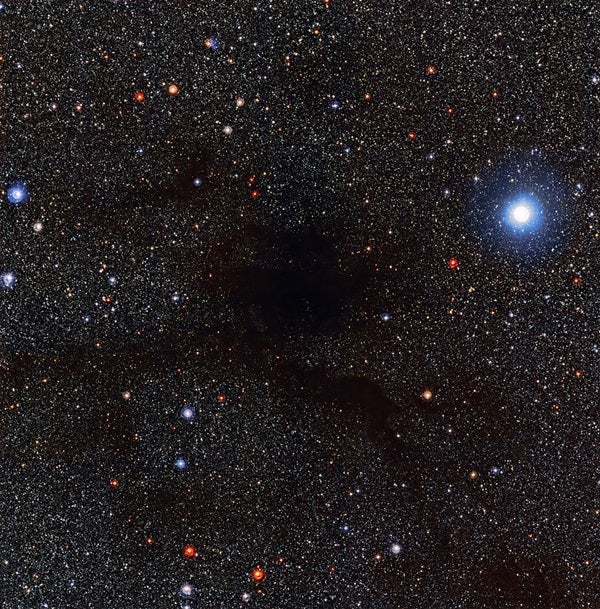Lupus 4 is located about 400 light-years away from Earth, straddling the constellations of Lupus the Wolf and Norma the Carpenter’s Square. The cloud is one of several affiliated dark clouds found in a loose star cluster called the Scorpius-Centaurus OB association. An OB association is a relatively young, yet widely dispersed grouping of stars. The stars likely had a common origin in a gigantic cloud of material.
Because the association and its Lupus clouds form the closest such grouping to the Sun, they are a prime target for studying how stars grow up together before going their separate ways. The Sun, along with most stars in our galaxy, is thought to have started out in a similar environment.
American astronomer Edward Emerson Barnard is credited with the earliest descriptions of the Lupus dark clouds in the astronomical literature, back in 1927. Lupus 3, neighbor to Lupus 4, is the best studied thanks to the presence of at least 40 fledgling stars formed over the last 3 million years, which are on the cusp of igniting their fusion furnaces. The main energy source in these adolescent stars, known as T Tauri stars, is the heat generated by their gravitational contraction. That is in contrast to the fusion of hydrogen and other elements which powers mature stars such as the Sun.
Observations of the cold darkness of Lupus 4 have turned up only a few T Tauri stars. Yet promisingly for Lupus 4 in terms of future star formation is a dense starless core of material in the cloud. Given a few million years, that core should develop into T Tauri stars. Comparing Lupus 3 and Lupus 4 in this way suggests that the former is older than the latter because its contents have had more time to develop into stars.
How many stars might eventually start to shine within Lupus 4? It is hard to say, as mass estimates for Lupus 4 vary. Two studies agree on a figure of around 250 times the mass of the Sun, though another, using a different method, arrives at a figure of around 1,600 solar masses. Either way, the cloud contains ample material to give rise to plenty of bright new stars. Rather as earthly clouds make way for sunshine, so, too, shall this cosmic dark cloud eventually dissipate and give way to brilliant starlight.










